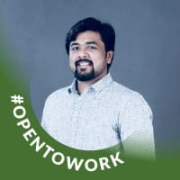

Oracle Data Integrator and Talend Data Fabric are tools in the data integration market. Talend, with feature richness and quicker ROI, suggests greater value over Oracle's pricier yet well-supported offering.
Features: Oracle Data Integrator provides scalability, real-time integration, and complex data handling. Talend Data Fabric offers numerous connectors, strong ETL capabilities, and community support, enhancing adaptability.
Room for Improvement: Oracle needs to simplify its deployment and reduce upfront costs. It could improve cloud support and flexibility in diverse environments. Talend can enhance its support services, address scalability issues in larger deployments, and streamline complex integration processes for beginner users.
Ease of Deployment and Customer Service: Talend ensures easy cloud integration and adapts swiftly across environments with robust community support. Oracle offers reliable on-premise stability but requires detailed initial setup despite its effective professional support.
Pricing and ROI: Oracle has high initial costs with extended ROI, justified by comprehensive support. Talend offers competitive pricing and low setup costs, facilitating faster ROI. Talend stands as a budget-friendly choice, while Oracle aligns with enterprises needing extensive support.
| Product | Market Share (%) |
|---|---|
| Oracle Data Integrator (ODI) | 3.1% |
| Talend Data Fabric | 0.8% |
| Other | 96.1% |


| Company Size | Count |
|---|---|
| Small Business | 25 |
| Midsize Enterprise | 12 |
| Large Enterprise | 43 |
| Company Size | Count |
|---|---|
| Small Business | 4 |
| Large Enterprise | 3 |
Oracle Data Integrator (ODI) is a data integration software solution that provides a unified infrastructure to streamline data and application integration projects. It uses a powerful design approach to data integration, which separates the declarative rules from the implementation details. The solution is based on a unique ELT (Extract Load Transform) architecture, eliminating the need for a standalone ETL server and proprietary engine.
Oracle Data Integrator Features
ODI has many valuable key features. Some of the most useful ones include:
Oracle Data Integrator Benefits
There are many benefits to implementing ODI. Some of the biggest advantages the solution offers include:
Reviews from Real Users
Below are some reviews and helpful feedback written by PeerSpot users currently using the Oracle Data Integrator (ODI) solution.
Brian D., Business Process and Strategy Specialist Advisor at NTTData, says, “The Knowledge Module (KM) is my favorite feature of ODI. This is where I learned how to use variables to make jobs dynamic. I took that knowledge and created a KM that would go into iTunes and pull the sales of eBooks. Making something that is reusable, like a KM, is important to not only reduce build time but also maintenance in the future.”
Ashok S., Applications Support Manager at a marketing services firm, mentions, "The most valuable features of ODI are the ease of development, you can have a template, and you can onboard transfer very quickly. There's a lot of knowledge modules available that we can use. If you want to connect, for example, a Sibyl, SQL, Oracle, or different products, we don't have to develop them from scratch. They are available, but if it's not, we can go into the marketplace and see if there's a connector there. Having the connector available reduces the amount of hard work needed. We only have to put the inputs and outputs. In some of the products, we use there is already integration available for ODI, which is helpful."
Talend, a leader in cloud data integration and data integrity, enables companies to transform by delivering trusted data at the speed of business.
Talend Data Fabric offers a single suite of apps that shorten the time to trusted data. Users can collect data across systems; govern it to ensure proper use, transform it into new formats and improve quality, and share it with internal and external stakeholders.
Over 3,000 global enterprise customers have chosen Talend to help them turn all their raw data into trusted data to make business decisions with confidence — including GE, HP Inc., and Domino’s.
We monitor all Data Integration reviews to prevent fraudulent reviews and keep review quality high. We do not post reviews by company employees or direct competitors. We validate each review for authenticity via cross-reference with LinkedIn, and personal follow-up with the reviewer when necessary.